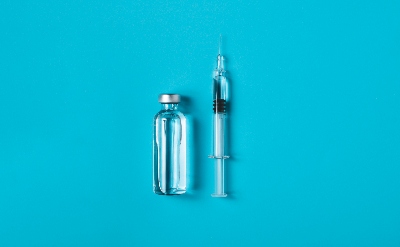Treatment with CT-P10, a rituximab biosimilar, resulted in similar long-term efficacy as the reference product for patients with advanced follicular lymphoma, according to phase 3 study results published in Blood Advances. The safety profile of CT-P10 was also comparable to rituximab.
The monoclonal antibody rituximab remains the standard of care for patients with treatment-naive advanced follicular lymphoma. Guidelines issued by the National Comprehensive Cancer Network endorse the substitution of approved biosimilars in place of rituximab.
Michinori Ogura, MD, director of the department of hematology and oncology, Kasugai Municipal Hospital (Japan), and colleagues initiated a randomized, double-blind, phase 3 study to determine whether CT-P10, given in combination with cyclophosphamide, vincristine and prednisone, was noninferior to rituximab in a cohort of patients with stage III to IV indolent B-cell lymphoma.

Results previously published in The Lancet Haematology showed the efficacy of CT-P10 was noninferor to rituximab (overall response rate, 97% vs. 92.6%), and that treatment with the biosimilar provoked a similar safety profile.
The current publication reported long-term secondary endpoints, including progression-free survival (PFS) and overall survival (OS), as well as safety analyses of the entire study period. The intent-to-treat population included data from 140 patients, with 70 patients assigned to each study arm.
Median follow-up was 39.9 months (interquartile range, 36.7-43.5). The median time to treatment failure was not reached among patients assigned CT-P10 and was 41.9 months (95% CI, 22.1-not estimable) among patients assigned rituximab.
A median was not reached in either group for other time-to-event endpoints, including PFS, OS, disease-free survival, time to progression and duration of response. However, the 4-year Kaplan-Meier estimates were similar for PFS (CT-P10 vs. rituximab, 61% vs. 55%; hazard ratio, 1.33; 95% CI, 0.67-2.63) and OS (88% vs. 93%; hazard ratio, 5.29; 95% CI, 0.84-33.53).
In total, 90% of patients assigned CT-P10 (n = 63) and 86% of those assigned rituximab (n = 60) developed treatment-emergent adverse events. Of these, the researchers determined that 57% of adverse events in the CT-P10 arm and 54% in the rituximab arm were related to the study drug.
Grade 4 or higher treatment-emergent adverse events affected 17% (n = 10) of patients assigned CT-P10 and 10% (n = 7) of patients assigned rituximab (study drug related, 7% vs. 7%). Ten patients assigned CT-P10 and five patients assigned rituximab discontinued treatment due to adverse events.
The most common treatment-related adverse events during the overall study period were infusion-related reactions (grade 1-2, 20% vs. 27%; grade 3, 3% vs. 0) and neutropenia (grade 1-2, 9% vs. 11%; grade 3, 20% vs. 10%; grade 4, 11% vs. 7%). During the maintenance period, the most common adverse events were neutropenia (grade 1-2, 3% vs. 5%; grade 3, 2% vs. 5%; grade 4, 5% vs. 2%) and upper respiratory tract infection (grade 1-2, 18% vs. 12%; grade 3, 0 vs. 5%).
Although a greater percentage of patients assigned CT-P10 experienced serious treatment-emergent adverse events (34% vs. 19%), the percentage deemed related to the study drug was similar (10% vs. 9%). Four patients died due to treatment-emergent adverse events, all of which were deemed unrelated to the study drug.
"[T]his report clearly demonstrates that the efficacy and safety findings for CT-P10 are robust over the long term,” the researchers concluded. “These data establish the noninferiority of CT-P10 and rituximab in the treatment of advanced-stage follicular lymphoma, demonstrating comparability in overall response rate during the induction period, as well as similar findings for time-to-event analyses and overall safety profiles.”
Photo Credit: Getty Images
